Professional Practice
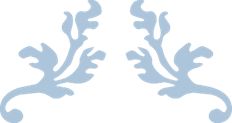
professional practice
International school of management and technology
Task 1/P1: Demonstrate, using different communication styles and formats, that you can effectively design and deliver a training event for a given target audience.
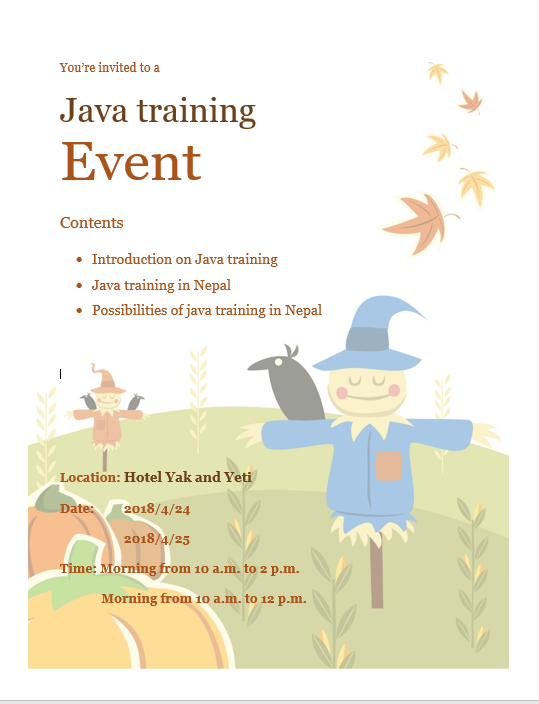
Introduction:
Communication means “The act of conveying intended meanings from one entity or group to another through the mutually understood signs and semiotic rule”. AS I am intern in IT company, I have given task to develop an event about “JAVA TRAINING” and make the audiences clear about its basic knowledge and ideas. It’s a two-day program for upcoming youths in Hotel YAK AND YETI. I am going to give a training about the basic concept of java training, java training in Nepal and its Uses in Nepal. For this type of event, schedule helps a lot for managing time so in Task I am going to demonstrate the training schedule, which I have prepared by using Microsoft Project.
Scheduling and its Importance:
Scheduling means “the method by which work specified by some means is assigned to resources that complete the work. To create a training schedule, we should be a care with (What should be done? When should be done? What is it’s a duration?)” (RAY ,2018) Scheduling is very important in our life which helps us to complete our task in time and it will be according to our plans.
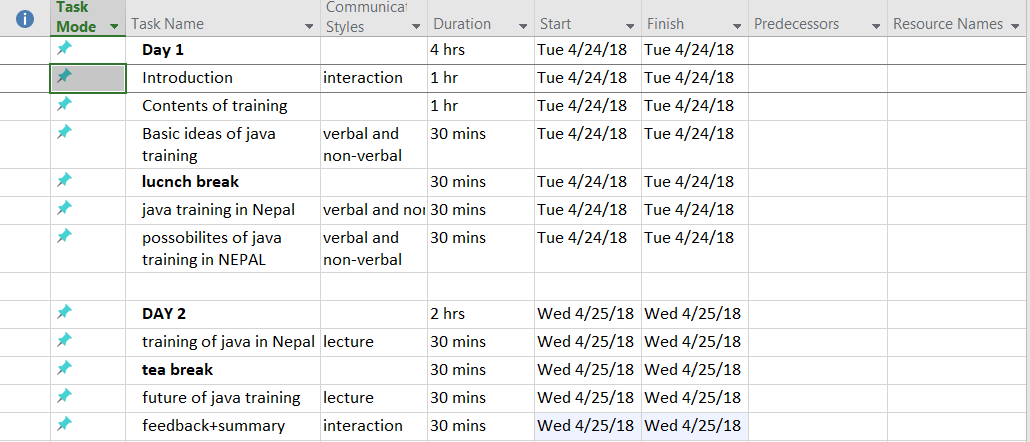
Communication during training:
During my training, I have to interact with the youth generation and we have to sure that their involvement in training. For this event, I have to use different types of communication as well as Some information of java programming.
Verbal Communication: Verbal Communication skills include more than just talking. for this event, we have to oral communication most of times. With the betterment of oral communication and good interaction will create a friendly environment with the youths and they can learn more. It also helps me to have good interaction between them and us We can know their difficulties and solve them properly and directly, which creates better understanding.
Non-verbal Communication: Non-verbal communication skills includes “postures, facial expression, eye gaze, gestures, and tone of voice”. From our handshakes to our hairstyles, nonverbal details reveal who are and impact how we are relate to them. Having good verbal communication skills is not enough for a presentation in a program. I have proper postures and tone of voice which helps the youths for the better understanding.
Visualization: Simply Visualization means “any techniques for creating images, diagrams, or animations to communicate a message”. (wikipedia, 2018) Verbal communication and Non-verbal communication skills is not enough to have enough knowledge about the topic. So I am going to use, visualization which helps them know the proper ideas about topic and videos related to java training. By using charts and graphs, they can know the present statistics and future on java training.
Conclusion: During training, I have used many kinds skills like “Verbal communication, Non-Verbal communication and Visualization. I will use all kinds of styles which helps and motivate
the youths for the proper knowledge and make them clear about topic. I will make sure that the topic will go sure as the plan and shown as above.
Task (2/P2): Demonstrate that you have used effective time management
Introduction
While conducting the event. I have to handle the using time effectively. That’s why I have used different time strategies. I have used proper scheduling; activity log was used during my program to manage time. Below is the presentation of the time management skills. 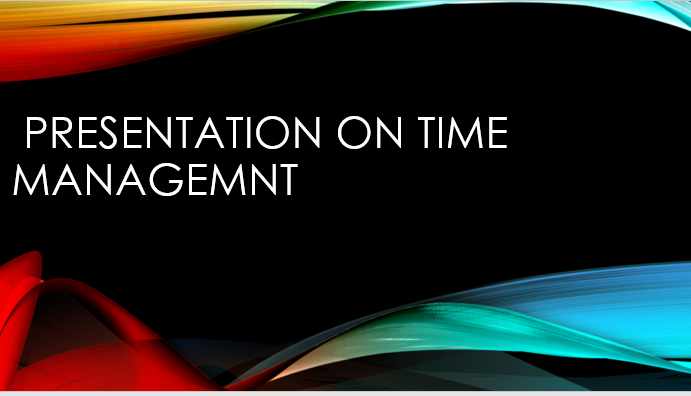

a
The purpose of presentation is to clarify the audience to have proper time management skills about the event and to improve time management of youths and to prioritize it.

Our company had organized two days training in which I had applied different kinds of time management skills which results me while delivering the project. 
Here I have prioritized the task: A means very important and the C means good.

I have prepared scheduling by MS PROJECT. Because of the scheduling it helps to finish a task in times with in improvement effective time management.
Using the time management time scale I have rated that some are productive and valuable and some are rated as .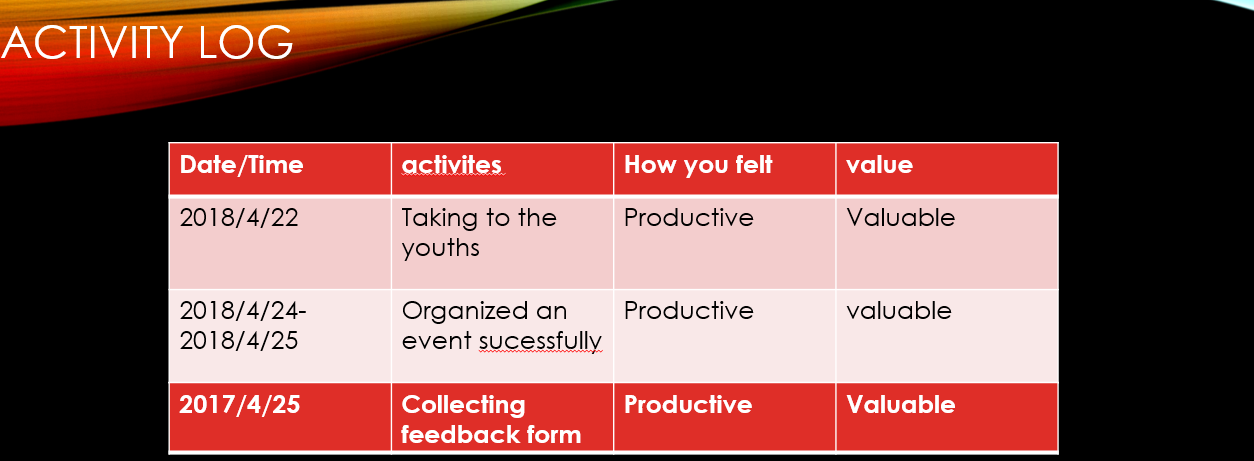
waste of time
By using time management strategies, it helps me not to waste time.

By using effective time management time strategies, I have finished on time.
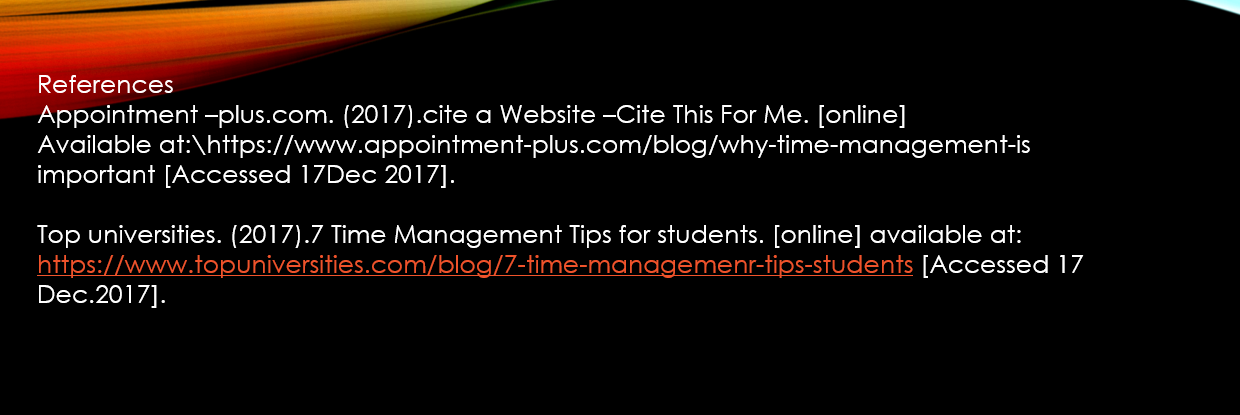
Conclusion:
As the above slides, I have used many different time management skills, that helps me to do presentation in time.
Task 3/M1: Design a professional schedule to support the planning of an event, to include contingencies and justifications of time allocated.
Introduction:
Proper scheduling before conducting the program helps make program successful. Scheduling makes our goal seems to realistic. Therefore, during the program I developed schedule calendar
Using a calendar. In this task, I am going to design detail schedule with contingencies plans of time allocated.
Proper schedule for conducting a program:
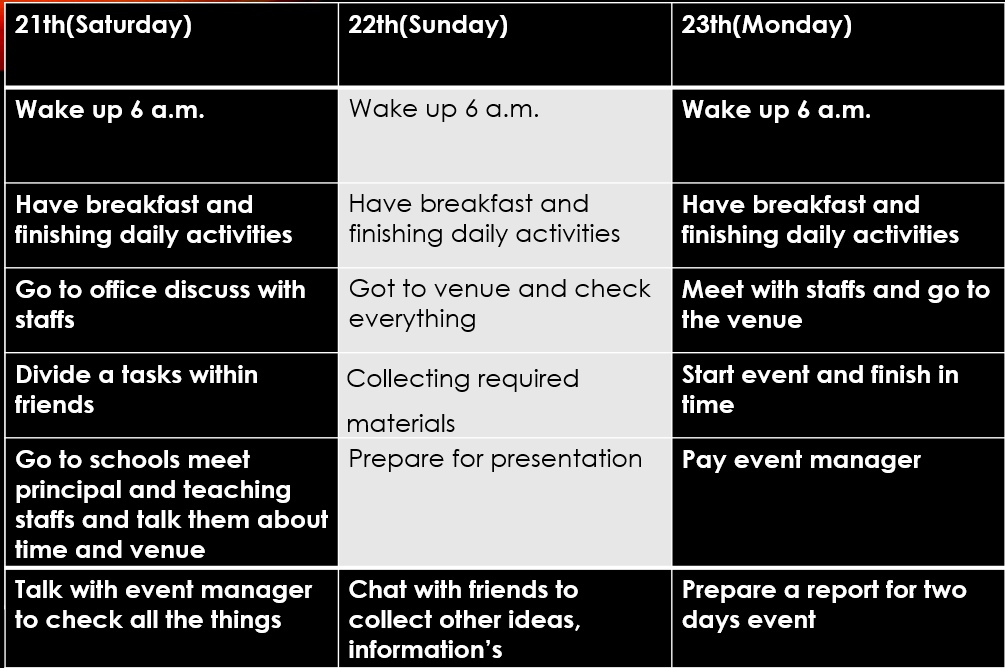
Contingencies plan:
Contingencies plan is also called “plan B”. According to the whatls.com “a course of action designed to help an organization respond effectively to a significant future event or situation that may not happen”. During my program it can’t be sure that I would able to do task in designed time.
Saturday (6 a.m. -6 p.m.)
On Saturday I have deigned my schedule and prepared my program 6 to 4 p.m. I have showed my schedule to the Director and discuss him about the budget, materials required and other things. If somehow I became unable to meet him and then and I go to talk with manager and discuss with them.
Sunday (6a.m.- 5p.m.)
On Sunday I have designed my schedule my program to meet my program whom will be on venue and checking if everything is alright or not. If I unable to present in the venue, I will call Them or message them.
Monday (6 a.m. – 5 p.m.)
I will express and prepared for presentation with my friends along with the budgets and other materials. I have made my plans for alternative for events. I will do best for my presentation, if any problem arises than I will use for backup plans.
Justification of time allocated:
I have justified why I used my times to do specific tasks:
Saturday
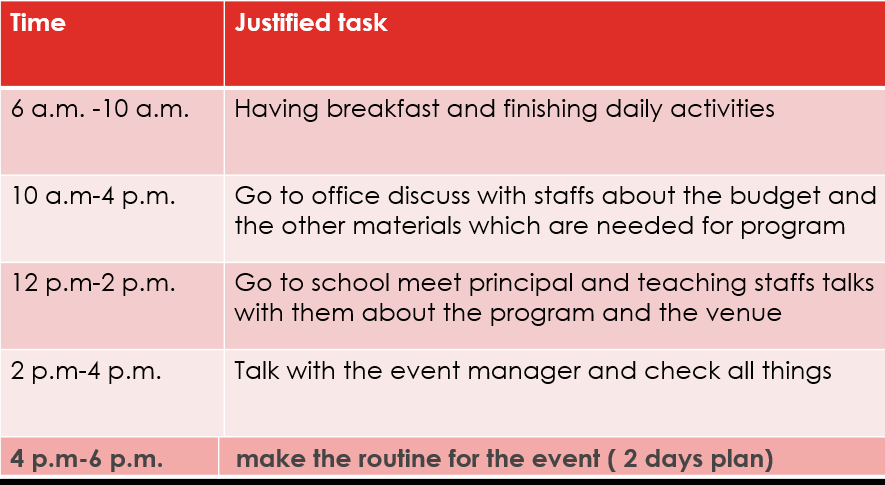
Sunday:

Monday:
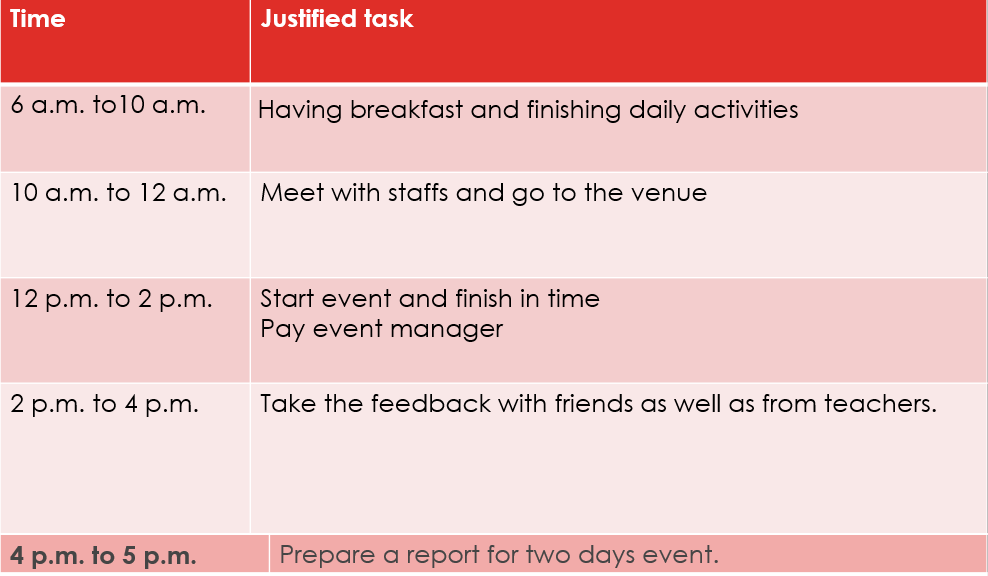
Conclusion:
In this way, I have given the planned a professional schedule to support an event, which includes contingencies plans and justifications of time allocated.
Task 4/D1: Evaluate the effectiveness and application of interpersonal skills during the design and delivery of a training event.
In this task I am going to discuss and evaluate the interpersonal skills which I have applied During the design and the delivery of my program event along with its importance.
Interpersonal skills are “the skills used by a person to interact with others properly”. Interpersonal skills include everything from communication and listening skills to attitude
And deportment. Good interpersonal skills are a prerequisite for many positions in any organizations. “Interpersonal skills are an important aspect of one’s personality. In simple word, it means congenial and a pleasant interaction with others. The various psychological factors that exist within in every human being and which consequently influence with others, are referred to as interpersonal skills” (Deeksha, personality-development, 2017).
Importance of interpersonal skills:
Interpersonal skills are “the powerful weapons people use to interact and communicate with individuals in an organizational environment”.
As I have already mentioned I have strong interpersonal skills helps to become successful in both professional and personal skills. If the individual has good interpersonal skills then with these skills he can navigate workplace, advance his career further and helps in productivity increment. Having good interpersonal skills in workplace makes you an approachable person.
Used personal skills during a program
Interpersonal skills are very important and it also act as a weapon in which people used to interact and communicate with individuals in an organizational environment. I have used different types of interpersonal skills which helped me for successful program. Those are listed below.
- Body language:
The interpersonal communication skill of body language is centrally focused on the stories we tell with our faces, our hands, our eyes, and our posture.
During the delivery of event other non-verbal communication were also used and body language is also one of them. Using of facial expressions most of the time eye contact, my gesture, tone of voice and my postures revealed my attitude in event. While giving presentation my gesture, tone of voice and time to time eye contact with people helped me to create a good environment and better connectivity with them.
- Time management:
According to American author and speaker John C. Maxwell- “Time management is an oxymoron (contradictory element). Time is beyond our control, regardless of how we lead our lives. Priority management is the answer to maximizing the time we have.” In my case also I have to manage my time effectively to succeed in my task. Therefore, I used different time management techniques which I have mentioned in presentation (Task 2). I also scheduled my task for better time management which I have shown in (Task 1 and 3).
- Optimism and Self-Confidence
“According to American author Hellen Keller- Optimism is the faith that leads to achievement. Nothing can be done without hope and confidence.” One must have believed in himself while doing some work. Self-confidence is the most needed skills to move your professional life further. While designing my program seniors asked me if I can do this job or not then without thinking much I nodded my head for yes.
Effectiveness of different Interpersonal Skills:
Above I have mentioned different interpersonal skills which I used during my program. All of these skills were very effective, it helped me for creating better connectivity with people by interaction with them. While I faced problem and while I need to make decision I used those interpersonal skills and they were of great use for me. Those skills were effective in this way I can conclude that all of these interpersonal skills were very effective during design and delivery of my even.
Conclusion
In this way I used different interpersonal skills during my program it successfully. Individual need to have these interpersonal skills if one’s lack them then he must develop if he has eager to push his career further to advancement.
TASK [5/P3]: Demonstrate the use of different problem-solving techniques the design and delivery of an event.
Introduction:
In this task I am going to demonstrate the various problem solving techniques which I used during design and delivery of program.
Definition:
Problem solving skills means “it is a job universal skills that applies to any position and every industry. While everyone is tasked with some form of problem-solving in their workplace, not all employees are good at it” (carrier builder, 2017). Generally, it includes the ability to identify problem, generating alternative solutions, selecting best alternative and lastly implementing selected solution. There are some techniques like SWOT analysis, six thinking hats, 5-why technique and 7-step technique to solve problems.
Problem solving techniques during design of program
During the design of my program, I faced random MS office cancelation problem. I had my training coming on that weekend and if I had not solved that problem quickly, that was going to create complicate to me. In this condition I used 5-why technique to find out root cause of problem arise and then solve it.
5-why technique:
“It is an iterative interrogative technique, which is used to explore the cause and effect relationship underlying a particular problem and easy to use without statistical analysis”. It is very simple to use you just have to ask 5-why questions but remember that the question should be powerful enough to include all envelope of your problem.
Implementation of 5-why-technique:
While implementing the 5-why technique, I have asked myself a question about a problem to why this problem arise. After facing what was my problem I asked my first question why it was occurred? By knowing the problem, the problem and by facing it and it makes this process makes me easy to solve the problem.
Problem Statement: Random MS office shutdown while preparing slides:
|
S.N |
Why? |
Answer |
|
1 |
Why MS office randomly cancelation problem? |
Because it was hanged. |
|
2 |
Why MS office got hanged? |
Because it was virus infected. |
|
3 |
Why MS office was infected by virus? |
Because antivirus was not running properly. |
|
5 |
Why computer antivirus was not running properly? |
Because previous antivirus was expired and it was not renewed. |
|
6 |
Why antivirus was not renewed? |
Because I was busy in my work. |
Main cause of problem:
It was very difficult to find out the main cause of problem. To reach the main cause of problem, we should identify the problem, gather knowledge about it, analyze the problem and then apply critical thinking to it. This technique helped me to ask myself questions, find out the root cause of problem, and then solve it properly.
Solution of problem:
After in found the main cause of problem, it makes easy to solve the problem. I knew that the main cause of problem was antivirus was not working properly. Then I manage time from schedule, I renewed antivirus and the MS word run smoothly.
Problem solving during the event:
Not only in design of the training but later on I have faced another problem, which was improper management of volunteer. In this situation, I used seven step problem technique.
Seven step solving problem technique:
It’s also one of the effective technique to solve the problem. In this technique problem is solved in seven step that includes defining, analyzing, determining, implementing the solution and lastly evaluating it. In this critical thinking is most required, one has had to show his creativity for solving through this process. The seven steps of this technique are shown below:
- Step-1 decides whether there is problem or not:
First, after the problem arise I have to decide whether or not problem has potential to solve is it worth the time and effort needs to be apply. Then I came to know that this managing a volunteer was a serious problem and it need to be looked seriously so I went towards identification of problem.
- Step-2 Identify and clarify the problem:
After I found the problem and I have to know about the problem and clarify it. Therefore,
I meet the program manager and find out the problem he told me because the number of volunteer was decline in number (25). And I thought it was serious problem and I am ready and I have solved the problem.
- Step-3 Generate potential solutions:
This step involves brainstorming many potential solutions. Identifying and clarifying the problem, it makes easy to solve it. I generated many problems without judging it and it makes to find the solutions easily.
- Step-4 Evaluate the potential solutions:
After I generated as many as solutions I have to evaluate them to find out the best solution from them. From generated solutions, I choose two potential solutions, which were either to shift presentation tomorrow or managed a volunteer and continue presentation. However, I have to choose one from those so I have to think what will be the outcome if I choose one from them.
- Step-5 Select the solutions:
After the evaluation, I choose the second one solution which was to manage some youths in program. Therefore, I choose the second solution because it was likely to solve the problem quickly and it was effective.
- Step-6 Implement the solution:
After I choose the solution I asked program manager to bring some youths and made them as a volunteer. Then after 20 minutes of interruption I was able to finish the presentation in scheduled time.
- Step-7 Evaluating the outcomes of implementation:
After implementing the solution, I evaluated the outcomes question and it was effective process and I was satisfied with this problem and it makes youths easy to understand.
Solution of the problem:
After applying critical thinking and using seven step problem solving technique, I was able to find the solutions and I manage some youths and manage them as a volunteer. After I managed the volunteer properly, I was able to do presentation.
So after using the seven-step problem solving process I was able to generate potential solutions by evaluating them by using best options.
Conclusion:
After solving those two problems during design and delivery of my event. I knew that instead of taking problem as challenges I should take them as opportunities to improve my critical thinking and problem solving skills. By using 5-why technique and seven-step problem solving process, I was able to solve two big problems. In my coming future, also if I ever faced these problem I will use these techniques properly and solve them easily.
Task (6/P4): Demonstrate critical reasoning has been applied to give a solution.
Introduction:
In task 5, I have demonstrated many problems and solved them smoothly in my program. And I solve them by using very effective process 5 why technique and seven step solving process helped me to overcome positive good results. While choosing the options for solutions we should think how to get positive outcome results. In this task, I have to find out the how I critically find out the best outcome for solution.
Definition:
Critical thinking defines as” a term that we hear a lot, but many people don’t really stop to think about what it means or how to use it”. Critically thinking makes us exactly what it means and make you realize that the average person largely ignores the thinking. “It means making reasoned judgement that are logical and well thought well. It is a way of thinking in which you
Don’t feel arguments rather than have altitude involving questioning about arguments” (smith, 2018).
Critical reasoning while problem solving:
During the design and delivery of my training event, I faced various problems. Some were minor while others were serious issues and needs to be solved quickly. While solving problems during event I have to think critically to reach to certain results. However, I did not rush toward the solution immediately, first I applied critical reasoning towards problem solving then only I implemented it. Mainly I applied critical reasoning while judging and evaluating situations based on my understanding of problem, analyzing it, selecting the best solutions and implementing the solution
When I faced improper management of volunteer first task need to be understand and identify the problem. I just want to be sure that the problem has arrived due to misunderstanding or not. But I found that this is a really a problem which should be solved. By identifying and analyzing the problem I began to work to solve the problem. One of my friend give me a solution that you should ask some youths to take part as a volunteer. One of my problem has finished but I had the similar same problem. My second problem was that my Microsoft office has been stop working due to expired. But later on by analyzing and implementing, I had finally found the solutions for the problem which was to renew it.
After reaching to the main cause of problem and by solving it that was able to continue making slides. It helped me to apply my deeper knowledge and by analyzing the skills, I am able to solve the problem.
Below I have provided some slides about the critical thinking.


the purposes for this presentation is to make clear and the know the importance of critical thinking.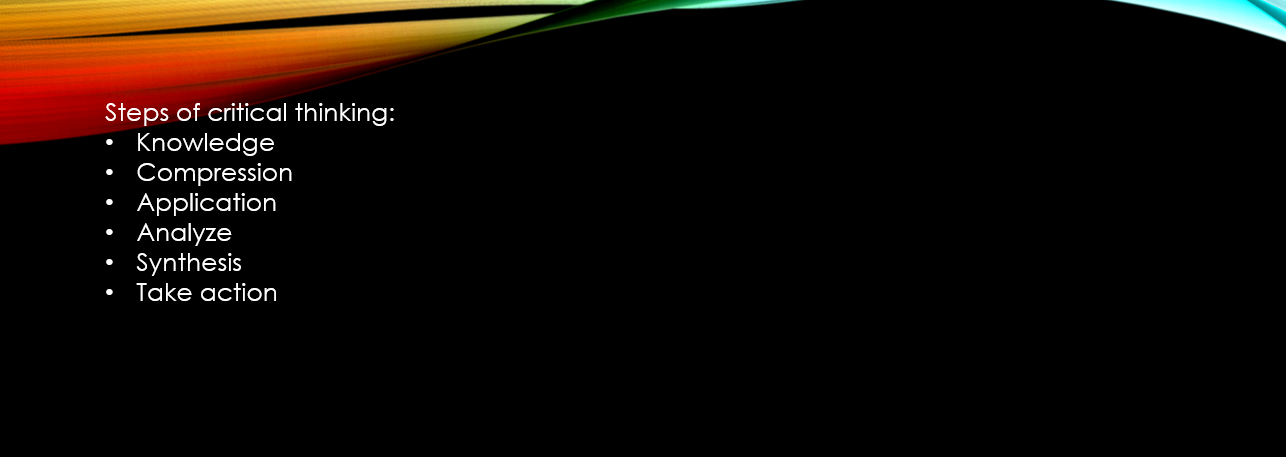
These are the steps of critical thinking which I am going to describe.

Conclusion:
In this way I applied critical reasoning for the presentation.by applying the critical thinking the
And solving the problem to handle future challenge and it helped me to gain some perspective.
Task (7/M2): Research the use of different problem solving techniques in the design and delivering of message.
Introduction:
In this task I am to demonstrate my research method is to find the different problem solving techniques in the design and delivery of message. I have used many techniques for solving problem. One of its primary solving techniques “primary research”. It refers “process of collection of data and analysis of primary data”. The common method which are in used in solving problems are email, answering telephone etc. (n.d, 2018)
Research topic:
My research topic is on “use of problem solving technique while in design and delivery of a program”. After doing the research I am able to identify the problems while in design and delivery of an event and solved it properly.
Research method:
For reaching the findings I used primary research method. I have used personal interview and questionnaire to Mr. Sudip banjara (who is a famous event organizer) and he provided me a
A chance of personal interview from his busy schedule.
After contacting him I was able to get his appointment then I went to his office. After I gave him my warm wishes. he described me the different problems he and his team face during design and delivery of an event.
Problems which are encountered while organizing event:
He told me that he had faces many problems while conducting program as an event organizer.
They have to be careful from the beginning i.e. choosing the best venue and to make happy for the guest. Then he described that he had faces many problems while design and delivery of an event.
- Racing with times:
While describing a problem he told that the most of the time clients give them a short notice for planning an event. They even don’t know that it takes how much time to select the venue and the preparation of event.
- Technical problems:
He also added that the nowadays, there is the high chance of technical failure while organizing an event. We have to keep up to the several expectations such as good lighting, decorations, WIFI connectivity and electrical hookups. So, we should be care with these types of things.
Techniques for problem solving:
When I questioned him about what types of techniques while problem solving. He said that he used different types of problem solving which are;
- Critical thinking:
it means reasoned judgements that are logical and well-thought. It is way of thinking in which you don’t simply accept all arguments and conclusions you are exposed but rather involving arguments and conclusions. For e.g. if we faced a problem in a less time than we can apply critical reasoning to problem. Then we generate solutions by hiring some workers in which we can solve the problem and we can reduce our problem.
- Communication:
Sometimes problem is bigger than thought. In this type of case, we talk to client for further problem. Interpersonal skills and good communication skills are important to this situation. For e.g. if we have the with the budget of program than we should try to make understand about the money spent expectations than we try to convince them.
Interview transcript:
Below, I have prepared some interview questions and he have some problem which are faced during the program.
|
INTERVIEW |
MR. Sudip banjara |
|
How is to like it a profession ? |
It is an amazing profession. We got many experience people by interacting them we can new ideas. |
|
How did your budget in track ? |
From the beginning we should be careful in budget and update daily when I spend money. |
|
If you face any problem than you solve in group or you will solve yourself? |
If we faced any problem than I will solve in a group because if we work in group than everyone knows the ideas how to solve it. |
|
Thank you Mr. Sudip banjara for sharing your views and it was great to meet you. |
Thank you. It pleasures to meet you. Thank you again for to express my feelings and I am glad that everyone will use this technique then they will not face any problem. |
Findings:
After interviewing the event organizer, I find the importance of problem solving techniques. When solving the techniques, we should solve our problem by communicating and negotiating.
Interpersonal skills and communicating skills are important to solve the problem. So these are the findings while interviewing the famous event organizer.
Conclusion:
In this way I was able to do primary research by using problem solving techniques. I interview event organizer, then I find how he maintained the budget in track, solve the problem properly than he told me that how to face the problem properly. Then I illustrate the findings, to solve the problem easily we should apply problem solving techniques.
Task 8/M3: Justify the use and applications of a range of solution methodologies.
Introduction:
In this task, I am going to give the justification of the use and application of a range of solution methodologies.
Method of problem solving:
Problem solving methods are “the steps in which we found solutions to problem and issues while solving the problems”. There are some methods for solving the complicated problems. We must know how to use methods and when to use it. Some the methods are given below:
5-why-technique:
It is an iterative interrogative technique used to explore the cause and effect relationships underlying a particular problem”. (wikipedia, 2018). The primary goal of the techniques is to determine the root cause of a defect or problem by repeating the question “why?”. The “5” in the name derives from an anecdotal observation on number of iterations needed to resolve the problem.
Justification of 5-why-technique:
For example:
The mobile phone will not run:
Why? The battery is dead. (first why)
Why? Because of backup battery was not installed. (second why)
Why? We did not have one. (third why)
Why? Because all shops are closed. (fourth why)
Why? Because of holiday. (fifth why)
Using this technique helps to get all the origin of the problem which address right at the point.it routes the problem which are related to the problems to get the ideas and information about the problems. However, the best result has grabbed when a team work on problem. While using this technique we don’t want help from any analysis. If the problem has may root causes, then it helps to find main root causes.
Seven-step problem solving technique:
It is one of the most effective technique and it provides a structured basis to help deliver
outcomes and solutions to our problems. In this technique, steps are findings, defining, analyzing, developing, selecting, implementing and evaluating. This type of technique is
usually used by psychologists for a person to solve the problem in the real scenario. This
process highlights two principles: “finding the solutions and focusing the right problem to solve”.
Justification for seven- step problem solving:
It is the effective technique to solve the problem. It defines the problem solving and solve the right problems by identifying and clarifying the problem. Using this technique helps to enhance our creativity while generating the possible solutions, evaluating solutions. We can also use this technique while solving problems in groups and teams. So this is one of the best way to solve the problem in personal or the professional workplace.
Conclusion:
In this way all of the various effective problem solving methods that solve our problems and enhance our skills. The technique for solving the problems are justified properly. This type of technique or methodologies are important to our daily life.
Task 9/D2: Critique the process of applying critical reasoning to a given task/activity or event.
Introduction:
In this I am going to give the short descriptions on critical thinking and illustrating their positive aspects along with their aspects needs to be improvement for betterment of future.

Critical thinking means “reasoned judgements that are logical and well-thought out. It is way of thinking in which you don’t accept all arguments and conclusions you are exposed to but rather have altitude involving questioning such arguments and conclusion.
Process of critical thinking during the event:
During my event it was responsibility to choose the place, selecting team workers and dividing the work them and check them they are doing or not. I faced a problem during the event then I used critical reasoning before implementing the solutions”. It helps in generating new ideas, skills evaluating them and selecting the best one for them. For solving the problems, I used various sources such as internet, books etc. I collected all the resources and implementing them. Then I evaluated all the points.
Identified positive aspects:
While applying critical thinking to the process I found the various positive aspects from it. In my opinion it helped me to see beyond and identify how to understand other facts that influence in decision making. While solving problem I found a way to identify other problem solving which were more efficient and helped in increasing my success. Another aspect which I need to improve for better doing next time was to research the different facts which I am going to present. During delivery of event I felt that my research wasn’t complete so for next time I have to get onto google or other books and start reading about topics. So next time I would be wiser to examine the result or outcome of the decision implemented. I would be wise enough to weigh my decisions along considering how it is going to affect my bottom line.
So if I understand and able to improve all the positive aspects of critical thinking than I can improve critical reasoning more effectively.
Conclusion:
In this way I have provided the positive aspects in process of critical thinking with along the needs to be improvement for future. I want to conclude the applying critical thinking wasn’t a easy job to reflect the aspects and the connections between them.
Task 10/P5: Discuss the importance of team dynamics in the success and/or failure of group work.
Introduction:
In this task I am going to discuss the importance of team dynamics in success and failure of group work along with examples.
Definition of Team Dynamics:
“Team dynamics are the unconscious, psychological forces that influence the direction of a team’s behavior and performance. They are like undercurrents in the sea, which can carry boats in a different direction to the one they intend to sail.” (P.meyers, 2013) They are the invisible forces that binds the team’s members to share common goal. Team dynamics can be both good and bad as it depends on each team member.
Importance of Team Dynamics:
A good team dynamic helps the team member to get committed in workplace which automatically gives the better results. Conflicts arising chance is low and trust can be established. Better team dynamics in workplace brings people from different backgrounds and levels of experience. With team dynamics and all members working towards common goal it leads to workload sharing among all team members so one member doesn’t have to lift the workload. Good team dynamics usually includes every member’s commitment towards the goal, cohesiveness feelings among members, and open communication between members.
Now I am going to illustrate team dynamics with examples which shows team dynamics in success and failure of team.
Team Dynamics in Success of Team:
To get success while doing teamwork we have to consider various attributes of team dynamics which are listed below:
- Interdependence
It is the key aspect for any team, for team to be successful every team member needs to perform up to snuff. A team with high interdependence has high levels of service to one another’s success and team member information. If one member tries to function independently or compete with team member this can lead to less than optimum result for team.
- Goal Specification
It is very important for team members to identify and prioritize the tasks needed to achieve the common goals. Goals helps members to understand which way they should follow and what they want to achieve in end.
- Cohesiveness
For better team dynamics every member in team should have the feeling of cohesiveness. It is an extent to which members remains united in common goal. Having group cohesiveness in team gives members a sense of trust, respect and belonging.
- Communication
Communication is must require key for many successes. For good team dynamics all members should come together to discuss ideas or with collaborative information to contribute towards goal. Effective interpersonal communication between members helps in smooth functioning of team.
Example of Team Dynamics for Success:
Recently the students of ISMT Section-G were given the task of developing the small software for a keeping records of the students and teaching staffs. For this task whole class was divided in teams and teacher 30 days allocated days for project completion. From the starting days Team B was focused in their goal and developing standard software. For clear vision first team decided to identify and prioritize all tasks then to divide the tasks in parts to all members. While division they asked all members about their strength and weakness this way, all members got their specific tasks in which they are familiar about. Everyone in the team were communicating face-face and every member’s information was evaluated properly so that he doesn’t felt inferior from others. All the members were ready to share workload of others, when one of their member was sick and unable to join team for few days then others resumed his task and later on he was able to join. finish their task within deadline. There was no This ensured that they would chance of conflict as all of them were communicating and small problems were out. When someone’s ideas got rejected also then he showed acceptance and later on he came up with multiple ideas which is most needed thing for team player. All the team members were quite adaptable which also involved preparing backup and alternative options.
This way we were able to complete their 30 days’ project in just 25 days. If the design of the any team software got the first rank than the college has promised that they will work as professionally. Because of the commitment of the team any one can achieve a goal in their life.
Examples of Team Dynamics in Team Failure:
As I have demonstrated various factors helps in successful team work there are different attributes which leads toward the failure of team work. The factors that leads towards team failure are mentioned below;
- Lack of leadership
“The lack of strong leadership can quickly slow a team down”. Because of lack of leadership
team will not be able to delegate responsibility, solve problems and also define roles within the group. Members will not be able to choose their roles in group and find the right direction which eventually may lead to wrong path and whole team goes down.
- Errors and negativity
“Finger-pointing is a characteristic of an ineffective team; members are quick to point out the errors and weaknesses of others rather than learning from setbacks and moving forward. An atmosphere of negativity builds walls between the members of the team, between the team and its supervisor, and between the team and its goals.” (Morello, 2018) . Before the members get chance to develop mistakes into huge problems self-evaluations helps to allow members to correct any errors.
Examples of Team Dynamics for Failure:
Same as in the above scenario there was other Team c which faced many problems and ended up for creating software. In that team there was interpersonal conflict arising which lead to tension and confusion about member roles. In that team most of the students are absent that’s why the meeting of the team has decrease. This team always encountered errors and negativity as members were quick to point out the errors and weakness of other members than to learn from setbacks and moving forward.
This way they were not able to complete their project in deadline not even their half of work. Although there were few hard working and responsible members in team but ignorance shown by some members of team affected whole teamwork.
Conclusion:
In order to have good team dynamics in team above mentioned attributes are very important. Better team dynamics in workplace brings people from different backgrounds and levels of experience. If team dynamics can be utilized, then we can get benefits of different ideas and experience in less time and organizations can get many benefits from good team dynamics.
Task 11/P6: Work within a team to achieve a defined goal.
Introduction:
Our professional teacher gives us the task to work within a team to achieve a goal. Following him we had made a team of five members to organize one-day event. It was type of event which we organized and we are supported by our college and teachers. All members gave their ideas and information about our topic and we are conducting the training “Social Media training” for the bachelors and master’s students.
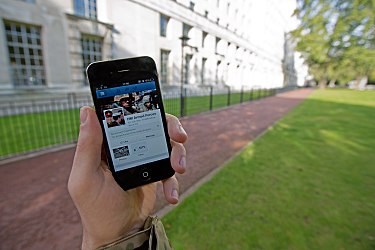
After getting the topic we decided to get divided so we can do work in time and complete effectively. First we made a framework for a specific task for everyone for managing task. We divided the roles between friends for managing time;
- Event planner: Prabesh kalika(ME)
- Event manager: Sarita banjara
- Trainer: Menuka Gautam
- Technical head: Shree Krishna Devkota
- Catering management: whole members
In this way we completed our roles:
- Event Planner:
As an event planner I had play vital role in event. I was responsible for great deal of important tasks like organizing transportation and in finance department. First I had discussion with my friends and I choose the location. Then for transportation I had talk to the owner about the parking facilities. And finance was managed by college.
- Event manager:
The task of event managing was given to Mrs. Sarita Banjara. As an event manager she had work smoothly. She was practical and active of event. When the team was in difficult
It’s Sarita who helped us and we can reach to our target.
- Trainer:
This task was given to the Mrs. Menuka Gautam. As trainer she put together the routines for performances devises and then makes it understood to the performer. She used various skill for that like as creativity, ability to think differently and different styles of presentation and performances. As well she has gave training to the many youngster about the social media that’s helps us to make the training better.
- Technical Head:
Task of looking towards technical materials was given to Mr. Shreekrishna Devkota. As technical head he has to do balancing act of managing technical process. He understands that event requirements, coordinated with resources and also provided training to teams when required.
- Catering Management:
The responsibility of catering and hospitality has solved all members of team. We successfully ensure the audiences are treated well during the event.
Conclusion: In this way we work together finally finished the small event. We understood that in team together we can achieve something more. If this type of task would be given to us in future, then also we will be succeeded by better teamwork.
Task 12/M4: Analyze the team dynamics, in terms of the roles group members play in a team and the effectiveness in terms of achieving shared goals.
Introduction:
In this task I am going to describe and analyze the team dynamics and effective terms to achieve the goal. According to the UK Researcher Meredith Belbin (the coming shape of organisations, 1996) it’s a tendency to behave, contribute and interrelate with others. He even suggested by understanding roles with a particular team you can develop your weakness as a team member”.
Roles people play in team:
According to the Meredith there are the many roles many members play in team and these are listed below:

Action/Task Oriented Roles:
The people playing this type of role provide the necessary drive to ensure that team keeps moving and doesn’t lose focus. They typically are very determined, and goal-oriented. They’re often more sensitive to goal contagion. Furthermore, shapers tend to communicate in an assertive, competitive and rather direct way. Implementers are practical. They are equally disciplined and hardworking. (serban, 2017) They have the skills to convert team ideas and concept to actions and plans. They work in the role of shaper, implementer and finisher.
For example, I want to relate this task to Mrs. Menuka gautam (trainer). During the event she was the one to ensure if team wasn’t losing its focus or not. When the team faced some problem then she always tried to solve that as quickly as possible. From the beginning to end she was very concerned about the program. She was worried about the deadline so we also have to be quick to be prepared before deadline.
People Oriented Roles:
People in this role focus on team objective draws out team member and delegate work approximately. “They’re the glue that holds the team together. Together with their eye for talent, they make a good tactical leader. They’re good listeners and, to this end, great with sharing goals. (serban, 2017) The strength of this type of people is their maturity, confidence, and identifies talent of other members. They are co-operative, perspective, diplomatic and generally acts as negotiators in team. These type of people are excellent listeners and are often calm, good natured and are able to delegate their task effectively.
For example, this task has played well by Mrs.Sarita Banjara (event planner) in our program. As a leader of our team she was always supportive, sociable and friendly. He developed contacts with audiences while inviting them in our event. He contacted with event organizer and negotiate for some discount also.
Thought Oriented Roles:
People of this role tends to be creative, good at problem solving and makes impartial judgements. Their job in team is in expert area while monitoring, evaluating and to give knowledge. Sometimes they are also creative member of the team with an imaginative and uncommon approach to solving issues.
For example, I would like to relate this with Prabesh kalika[ME] and Shreekrishna Devkota (Technical head). I have to monitor the team work while doing tasks. I have to apply my critical thinking and be very strategic in my approach. When team come up with new ideas then my task was to analyze and evaluate their ideas and carefully weighing all options before coming to decision. Not only me my friend has also play a great role. He had managed our technical part. If we don’t appoint as a technical head on the program than will faced a great problem that anyone cannot solve the problem. All the roles which I have mentioned above were very effective and with good team dynamics we achieved our common goal.
Conclusion:
I have mentioned all the roles people play in team only in three categories. But this doesn’t mean every team requires all these people. Every team role has its strength and weakness too with equal importance so its depends on us how to do.
Task 13/D3: Provide a critical evaluation of your own role and contribution to a group scenario.
Introduction:
In this task with the reference from Task 11 and making judgements on my role in a team by identify the strengths and where I need to improve. I am also going to describe contribution to achieve the shared goals.Our teacher gave us a Task of organizing event “Social Media training” and divided in a team.We divided all the task in a group that ensure individuals so it may cannot create any problem further.
My role in a team work:
According to James Cash Penny- “the best teamwork comes from men who are working independently towards one goal in unison.” In my team also as I was the event planner I had vital role in event management hierarchy. I was mainly responsible for great deal of important tasks like choosing location, organizing transportation and in finance department. For doing this role effectively I have to be creative, good at problem solving and sometimes make impartial judgements. Then looking towards transportation I asked that organization owner about their parking facilities which was enough for our audiences. He promises me to provide technical support and give some discount because I also have to look toward our budget provided by our college. So I contacted our event manager and booked venue. This way I played my role in team by knowing my strong points which helped us to achieve our common goal.
Areas for Improvement in my Role:
Although we were able to finish our event successfully and all members played their role effectively. If I became able to improve those flaws, then I am sure I would be able to present myself better next time. Better communication with audiences and also with my team member will help me to present myself in better way. Also I think that I need to improve my motivational skills. Event planner usually have the leadership skills which includes motivation also. If I became able to inspire other, then I will also become able to convince them.
My Contribution for Shared Goal:
Being a planner I played vital role in my team. I need to come up with new ideas and discuss about those ideas with team members. I have to be updated with the budget as we were already low on it, I have to ensure the money was spent on right place. Although I have to improve to be better in my role but it wasn’t an easy job to play role of event planner and I am very happy that I was able to do it and again if I be an event planner than I will do better than first.
Conclusion:
In this way I have contributed to team for achieving the common goal. By gaining the skills and ideas from the training I will not forget these. By improving I would be able to do this role more effectively next time.
Task 14/P7: Discuss the importance of CPD and its contribution to own learning.
Introduction:
In this task I am going to describe the CPD Continuing Professional Development it’s importance and contribution of CPD.
Definition of CPD:
CPD stands for “Continuing professional Development”. It refers the lifelong process of learning and continuing personal development. Its means by which you can maintain and enhance your knowledge and skills to complement both your current role and your future career progression.
In simple words, it is a process for setting objectives then charting your progress towards reaching your goal.
Importance of CPD:
CPD allows person to focus on what specific knowledge they require over a short-time period by keeping your own record. It provides you your report of how far you’ve progressed and what are your achievement till now. It is an essential activity to help ensure that your all round skills and knowledge are up to date. Below are mentioned some of the importance of continuing professional development (CPD).
- Those who take a planned approach to skills development tend to move up the career ladder more quickly and in a direction of their choosing. Planning CPD in advance that it is more likely to be relevant to your working life.
- A record of CPD can provide evidence of competence-to draw upon for reviews, promotions, interviews and when necessary regulatory requirements.
- It allows the lofAM to demonstrate that all members (at each Level-Associate, Member and Fellow) are competent, keeping and skills up to date.
- It should provide you with the knowledge, skills, attitudes and values that you need to have to perform effectively and competently in your role and to meet the expectations placed on you by our employers, colleagues and the members of your association.
- CPD helps in improving protection and sustainability depending on your profession.
- Good CPD helps you to find new possibilities, knowledge and new skill areas.
- It helps in ensuring that you enhance and maintain skills, knowledge which you need while giving service to customers and clients.
Contribution of CPD in my own learning:
I am currently working in a tulips technologies for the past six months as software developer. This company makes applications and websites for schools, offices and large organizations. I am using CPD lasts 6 months and it had helped me a lot for developing my skills.
It’s not easy task to work as senior web developer in company. You are required to have many professional skills like decision making, negotiation skills, time management, and interpersonal skills. Not only the skills but one also need the professional knowledge about task to complete it within deadline. That’s the reason I am using CPD till now. At the time I joined company I was just an introvert person, I didn’t used to talk with office colleagues and I had fear of doing presentation. I knew that this wasn’t really going to work because there is always presentation and you must have good presentation skills. Then I thought of using development plan to track my record and review it. This way I was able to develop my presentation skills day by day until one day I had good presentation skills. I also improved my interpersonal skills which are much needed skills for any employees. Then after few months of joining I got adopted to the environment, I used to spend time with my colleagues in break time and after I had good presentation my boss got quite impressed by me. After that I was becoming part of every project, with good team work me and my team gave quite well result. Because of better results that I got the company has promoted me.
Conclusion:
CPD helps me from a starting time and it helped me keep updated. I am regularly tracking down my records of my own task I set out my new target for certain time. This way by learning new skills and by enhancing them daily It helps me to enhancing my career.
Task 15/P8: Produce a development plan that outlines responsibilities, performances, objectives and required skills, knowledge and learning for own future goals.
Introduction:
In this task I am going to describe a structural development plan which shows responsibilities, performances, objectives and required skills, knowledge and learning for own future goals.
Professional development Plan:
“A learning to earn or maintain professional credentials such as academic degrees to formal coursework, attending conferences, and informal learning opportunities”. It has been describing as intensive and collaborative, ideally incorporating an evaluative stage. There are a variety of stage to professional development, including consultation, coaching, communities of practice, lesson study, mentoring, reflective supervision and technical assistance.
According to Alfonso Martinez (Chief Human Resource Officer)- “The process of preparing and implementing a professional development plan not only allows for a more concrete visualization of the possibilities of a brighter future based on personal and social resources, but it also functions as a self-commitment to make them reality.”
Responsibilities and performances objectives:
As an IT officer in tulips technologies I have various responsibilities towards company and its employees. Whenever the new clients come first I have to interview them, about how will that software or website help them. For this I have to study and know all about their system how their organization works. After that I have to create framework how this project can be done, how long it can take to finish this. Moreover, then I have to negotiate with them when it comes to budget friendly application. There always should be win-win negotiation for which I have to be well prepared from the beginning.
After gaining some experience, I would like to establish own company by knowing own strength
And weakness. If I set my goals and achieve the goals than professional development plan will help.
Where I am now:
Recently I have completed my final years’ bachelor degree from in IT from ISMT College and I have been working in tulips technologies for last six months. After studying final years I have acquired knowledge in different subjects. Professional Development subject is helping me now to implement my different skills which I gathered during my study. As a new staff in this company I have to develop many new skills to enhance my career further so I thought of making development plan which will help me to keep my record.
Personal developmental plan:
Name: Prabesh kalika department: IT organization: tulips technologies
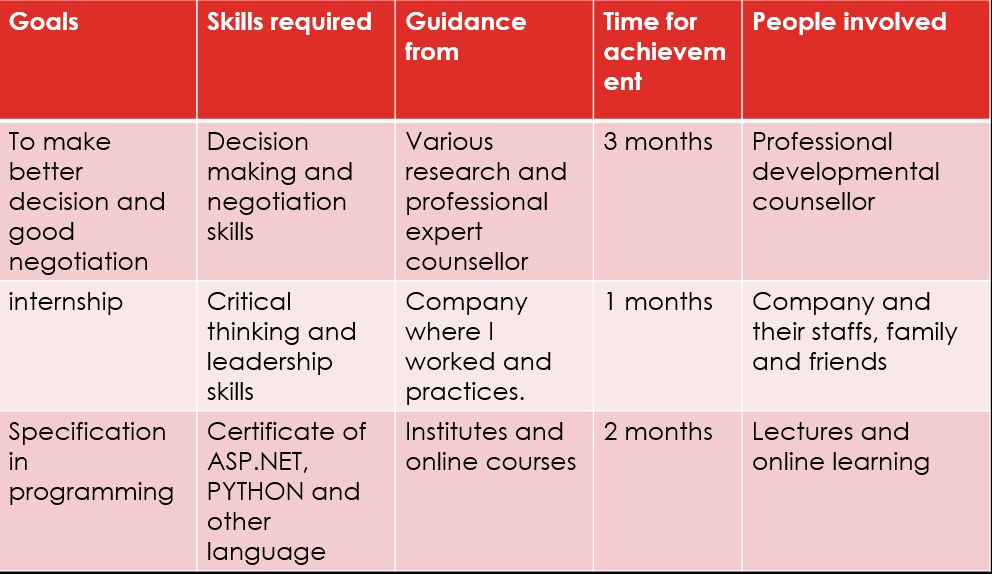
Required skills:
Decision making and negotiation:
The decision making and negotiation skills are must require skill for any employee who wants to achieve more in his career. After acquiring these skill, I can easily handle the clients and I would be able to choose right decision over the wrong one.
Good Programming Skills:
Although I know two programming language but I want to improve my programming skills. So if I get better opportunity of job from other better companies I can grab that job. Getting knowledge of python and dot net will help me to improve my programming skills.
Conclusion:
So this way I structured my development which helped me to find out my current performance. I came to know what I need to improve for my better career and what are opportunities and threats to my career progression.
Task 16/M5: Compare and Contract different motivational theories and they impact they can have on performance within the workplace.
Introduction:
In this task I am going to compare and the similarities and differences among two different motivational theories along with their impact on workplace. “According to BBC regarding business: Motivation is about the ways a business can encourage staff to give their best. Motivated staff care about the success of the business and work better.” Simply we can define motivation as the pulling and pushing of behaviors towards a certain goal.
Hertzberg’s Two-factor theory:
According to Herzberg, there are some job factors that result in satisfaction while there are other job factors that prevent dissatisfaction. These two factors are Motivator factors and Hygiene factors.
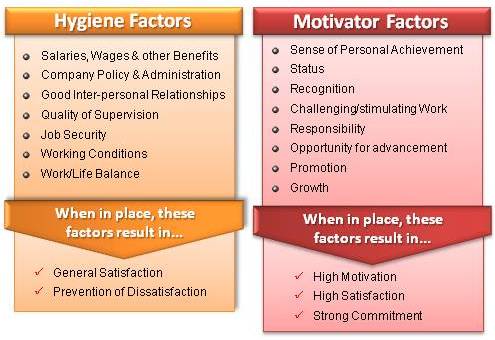
- Hygiene factors
These are the job factors which are essential for motivation existence in workplace. Hygiene factors are also called as Maintenance or dissatisfies factors because they are used to avoid dissatisfaction in employees. The hygiene factors of motivation are Pay, Fringe Benefits, Physical Working conditions and job security.
- Motivator factors
“According to Herzberg, the hygiene factors cannot be regarded as motivators. The motivational factors yield positive satisfaction. These factors motivate the employees for a superior performance. These factors are called satisfiers. These are factors involved in performing the job. Employees find these factors intrinsically rewarding.” (Juneja, 2018) Those motivational factors are Recognition, Sense of achievement, Responsibility and Meaningfulness of work.
“According to Herzberg’s findings, these both factor influenced motivation, they appeared to work completely independently of each other. While motivator factors increased employee satisfaction and motivation, the absence of these factors didn’t necessarily cause dissatisfaction. Likewise, the presence of hygiene factors didn’t appear to increase satisfaction and motivation, but their absence caused an increase in dissatisfaction.” (Redeye, 2014)
Maslow’s Hierarchy of Needs
Abraham Maslow developed this theory which is a classical depiction of human motivation. The assumption of this theory is that in each individual there is hierarchy of five needs. “According to Maslow, individuals are motivated by unsatisfied needs. As each of these needs is significantly satisfied, it drives and forces the next need to emerge. Maslow grouped the five needs into two categories- Higher needs and Lower-order needs. The physiological and the safety needs constituted the lower-order needs. These lower-order needs are mainly satisfied externally. The social, esteem, and self-actualization needs constituted the higher-order needs. These higher-order needs are generally satisfied internally, i.e., within an individual. Thus, we can conclude that during boom period, the employees lower-order needs are significantly met.” (Juneja, 2018)
Physical Needs: We can motivate employees by providing them required breaks for lunch, enough pay to buy their essential needs.
Safety Needs: By providing them safe and secure work environment with better job security we can motivate employees.
Social Needs: When employees feel they are accepted to team and get love, affection, care and friendship in workplace they are motivated.
Esteem Needs: If an employees get needs like self-respect, confidence, competence they will get motivated.
Self-actualization Needs: These needs include desires for gaining more knowledge, social –service, creativity.
Similarities between Two-Motivational Theories:
Both the motivational theories use hierarchical scale where before advancing to next stage the previous stage should be fully completed. They both specify criteria to which motivates people. Hertzberg’s hygiene idea relates with Maslow’s Physiological, Safety and Belongingness needs i.e. both have same criteria e.g. basic pay, physical working conditions etc.. Both the theories are influenced by environmental conditions, attitude of employee and overall their motivation. The needs of employee at higher level of hierarchy of Maslow’s theory has been defined as motivators by Hertzberg.
Difference between Two-Motivational Theories:
Maslow formulated model on basis of experience but Hertzberg developed on basis of empirical studies. Another difference is that Maslow takes into account all needs of employees where Hertzberg focus only on needs which are related with environment. The main difference for two theories are Maslow theory is applicable to all type of employees where Hertzberg’s theory is mainly used by professional persons. In Maslow theory motivation relies on need and satisfaction of employees where Hertzberg focus on rewards and recognition of them.
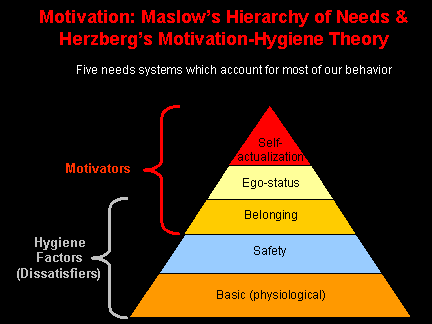
Impact of Motivational Theories in Employee:
Both the theories are effective way for motivating employees. Hertzberg motivates by giving the basic lower needs and also higher needs whereas Maslow theory motivates by giving the basic pay, safety and social needs. Using those theory, we can also know about the person working. But for this we have to practice the motivational theories because different factors motivate different employees. Some of employees wants to get only the basic needs from organization while the others need hygiene factors. Giving rewards and incentives gives the job satisfaction, increases morale among employees and create greater efficiency too many of the employees. But giving rewards and incentives might not work for someone, sometimes this might go wrong to some employees who give priority to work more than money. This way using different motivational theories we can know about the person working.
Conclusion:
In this way these two motivational theories aim at simplifying the motivational process which proves that motivation is important factor for improvement of performance level in employees. Using these motivational theories in work place we can create the greater efficiency by employees. Motivating them towards their work also helps them to broaden their knowledge and on other hand it gives profit to organization.
Bibliography:
Allen, M., 2016. jobs.ac.uk. [Online]
Available at: http://www.jobs.ac.uk/careers-advice/managing-your-career/1318/what-is-continuing-professional-development-cpd
[Accessed 21 march 2018].
Anon., 2018. Asq.org. [Online]
Available at: http://asq.org/learn-about-quality/problem-solving/overview/overview.html
[Accessed 2 march 2018].
Deeksha, 2017. personality-development. [Online]
Available at: http://www.psychologydiscussion.net/personality-development-2/interpersonal-skill/interpersonal-skills-meaning-and-behavioural-traits/1200
[Accessed 27 march 2018].
Deeksha, 2017. personality-development. [Online]
Available at: http://www.psychologydiscussion.net/personality-development-2/interpersonal-skill/interpersonal-skills-meaning-and-behavioural-traits/1200
[Accessed 10 January 2018].
Juneja, P., 2018. managementstudy. [Online]
Available at: https://managementstudyguide.com/maslows-hierarchy-needs-theory.htm
[Accessed 25 march 2018].
Morello, R., 2018. smallbusiness.chorn. [Online]
Available at: http://smallbusiness.chron.com/characteristics-ineffective-team-45184.html
[Accessed 21 march 2018].
Mosley, A., 2015. cleverism. [Online]
[Accessed march 2018].
Mosley, A., 2015. cleverism. [Online]
Available at: https://www.cleverism.com/skills-and-tools/problem-solving/
[Accessed 3 march 2018].
n.d, 2015. happy-manager. [Online]
Available at: http://the-happy-manager.com/tips/5-whys/
[Accessed 23 march 2018].
n.d, 2017. ukesssays. [Online]
Available at: https://www.ukessays.com/essays/management/meaning-and-definition-of-personal-development-plan-management-essay.php
[Accessed 21 march 2018].
n.d, 2018. mbaskool. [Online]
Available at: https://www.mbaskool.com/business-concepts/marketing-and-strategy-terms/8768-primary-research.html
[Accessed 23 march 2018].
Nordmeyer, B., 2017. careertrend. [Online]
Available at: https://careertrend.com/teamwork-conflicts-4330.html
[Accessed 20 march 2018].
P.meyers, 2013. Definition of Team Dynamics. [Online]
Available at: http://www.teamtechnology.co.uk/team/dynamics/definition/
[Accessed 18 march 2018].
RAY, S., 2018. ProjectManager. [Online]
Available at: https://www.projectmanager.com/blog/what-is-project-scheduling
[Accessed 2 march 2018].
Redeye, 2014. Contactzilla. [Online]
Available at: https://contactzilla.com/blog/5-psychological-theories-motivation-increase-productivity/
[Accessed 25 march 2018].
Serban, R., 2017. Hubgets. [Online]
Available at: https://www.hubgets.com/blog/team-dynamics-belbin-team-roles/
[Accessed 25 march 2018].
Smith, D., 2014. Study.com. [Online]
Available at: https://study.com/academy/lesson/what-is-critical-thinking-definition-skills-meaning.html
[Accessed 3 march 2018]
Category
Business Management
Homework
Writing & Compare Documents
Computer Science
Teaching and Learning
Technology
Personal Development
Research Topics
Geography
Recruitment
NVQ Level 3 Diploma in health & social care
Social
Digital Marketing
Assignment Writing
Economics
International
Speech Topics
Travel And Lifestyle
Health
Project Proposals
Writing
Case Study
